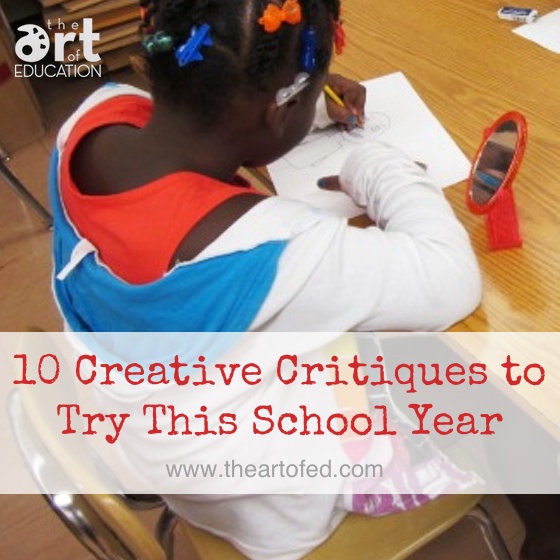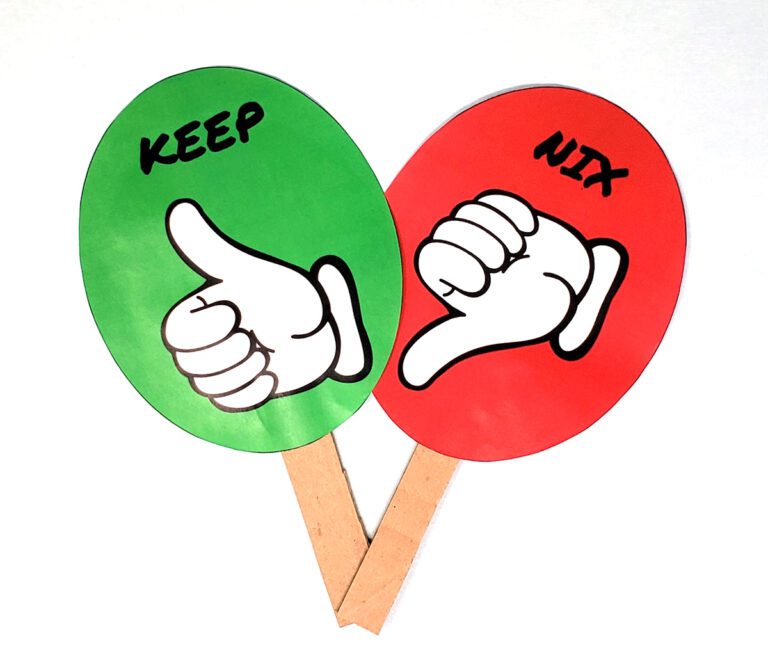Many of us might cringe thinking back to our days of college art critiques. A poorly-facilitated critique can not only be a waste of time but can also be disheartening for students. Many of us have been on the teacher side of things too, asking students to respond and engage and getting crickets in return. So, the question is, how can we make the critique process useful? Dare I say, enjoyable? I’d like to share some incredible critique activities to try in your room. You just might find yourself in the midst of a fantastic, meaningful discussion!
Here are ten creative critiques to try this school year.
1. Table Top Twitter
Place a piece of art in the middle of each table on top of a large sheet of paper. Have students use 140 characters or less to leave a written response on the large paper.
2. Ping Pong Critique
Write thought-provoking questions on ping pong balls and place them in a jar. Students must draw a ball and talk or write about the question. As they get better, students can write their own questions to place in the jar.
3. Strengths/Weaknesses
Make a two-column graphic organizer. For each piece of art have students write three strengths and three weaknesses. Always have them back up their opinions with visual evidence!
These ideas are a great place to start. If you’re looking for a comprehensive take on critiques in the art room, be sure to check out the Critiques at Every Level PRO Pack. You’ll learn how to simplify critiques and engage your students! You can find this Pack and more like it in PRO Learning.
4. Interview
Have students use a set of questions to interview each other about their art and the process of making it. Students must report to the class about their partners’ work, rather than their own.
5. I Wonder…
Rather than forming statements or opinions, limit the students to only writing questions about the work. Warn them that they may never know the real answers!
6. Limitations
Give students a limitation (sometimes the path to the most creative thinking!) on how they participate in the critique. For example, you must comment three, and only three, times.
7. Love Letters
Write a love letter or Dear John letter to a piece of art. Bring some student emotion into the discussion by having them explain why they love or hate the piece.
8. What happens next?
Ask students to extend their thinking by making inferences. Have students look at a piece of art and create or write about what happens in the next five minutes of the scene, or in the five minutes before the scene. This works best for narrative pieces.
9. Reflection Process
When reflecting, have students get into higher order thinking by asking these questions in this order: What did I do? What was important about it? Where could I use this again? Did I see any patterns emerging? How well did I do? What should I do next?
10. Devil’s Advocate
Have students write both an argument for why a piece is successful and why it is not successful. By having to explain opinions opposite to their own, they must think even more deeply.
Have you used any of these methods in your classroom?
What would you add to the list?
Magazine articles and podcasts are opinions of professional education contributors and do not necessarily represent the position of the Art of Education University (AOEU) or its academic offerings. Contributors use terms in the way they are most often talked about in the scope of their educational experiences.





